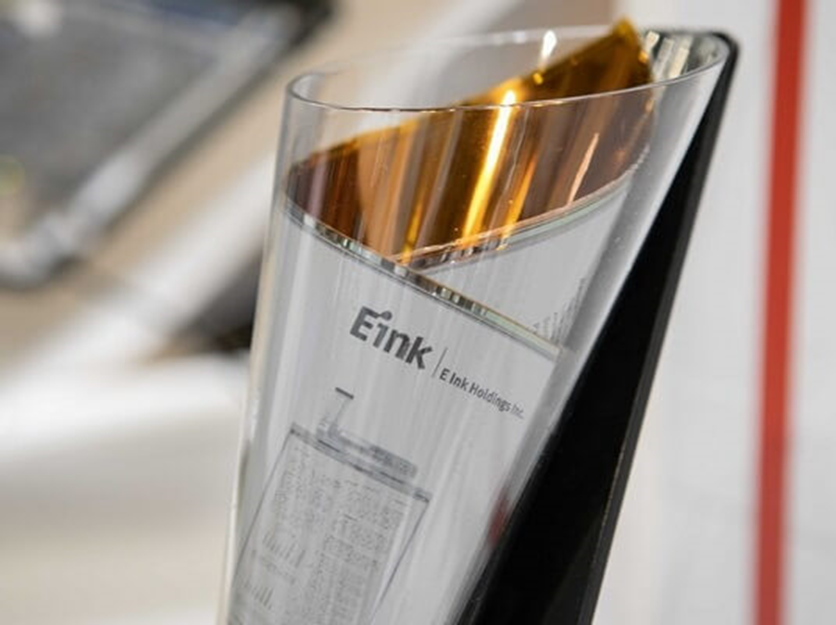Welcome back to the New Inker Series! We’ve already covered the major ePaper competitors (LCD and paper) as well as the harmful impact of blue light, but what defines the ePaper technology stack? Today, I’ll get into the ink-filled weeds and talk about the major module components that define E Ink products: flexible backplanes, front lights, touch capacity, and electronics.

Credit: E Ink
Visible Components
Flexible backplanes all started with the E Ink Mobius, which was the first plastic based TFT (thin film transistor) offered in mass production. With this new development came solutions to long-term limitations that were caused by glass backplanes. One of the biggest benefits of these backplanes is that products can be lighter and thinner. This also made it possible for products to be bigger without being too heavy for an end-user, which leads to the ability for single handheld devices. One of the main appeals to using an eReader is that you can easily keep one hand free, unlike when reading a physical book. End products can also be more rugged thanks to their flexible backplanes. They are less susceptible to breakage, and you won’t have to worry about your screen shattering if you accidentally drop your device.
While ePaper leverages the ambient light from whatever environment you’re in, what happens in dim to no light environments? That’s where the front lights come in. They are built into the sides of the device, and a very thin material is used to uniformly disperse the light. It’s important to note that the front lights don’t shine directly into your eyes. Instead, they are angled down the surface of the display, and the reflected light is what allows you to view the content in those darker environments.

Credit: E Ink
Non-Visible Components
The different touch technologies that can be found in an ePaper device are important for various use cases. Each display can be integrated with several sensor types: resistive, inductive, capacitive, or infrared.
- Resistive touch responds to pressure applied to the screen
- Inductive touch needs a stylus to interact with the display
- Capacitive touch means there is an increase in capacitance, which is created by physical contact with the display—this specific touch technology is detected by a controller IC
- Infrared touch is where a finger, for example, breaks the infrared beams that are over the display to detect an interaction.
A newer addition to E Ink products is On-Cell Touch, which helps to provide improved optical performance. This touch technology provides new benefits such as clearer text content or increased color saturation.
Having an ecosystem of devices, like all the different ePaper products, makes it easier to quickly design the electronics and firmware needed for integrating an E Ink display into different or novel products. E Ink devices, also known as electrophoretic displays (EPDs) require special electronics to control and drive the screen. There are two types of EPD controllers, discrete controllers and System on Chip (SoC) controllers. Discrete controller designs are dedicated electronics where the EPD controls are hard wired into the design of the product. SoC controllers, on the other hand, are microprocessor based, meaning the EPD control functions are usually implemented through firmware that is developed by the IC supplier. Devices also have integrated power management ICs (PMIC). These are created in collaboration with major Semiconductor firms to support the voltage and power levels that ePaper displays require.
All of these components work together to create the ePaper displays and devices that we all know and love. Learn even more about the different module components of an ePaper display here.


Leave Comment